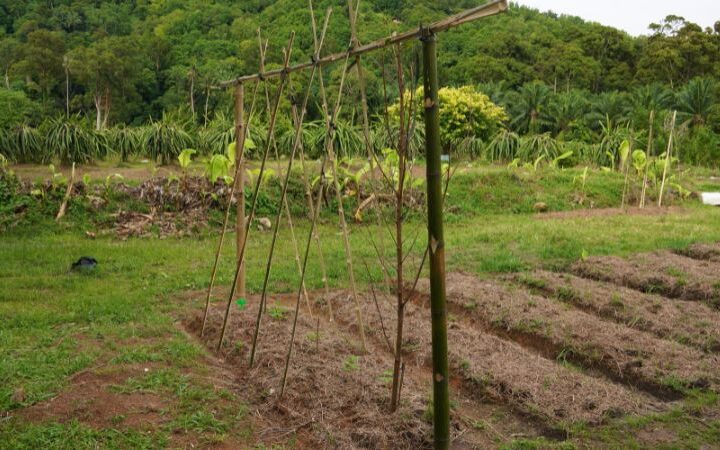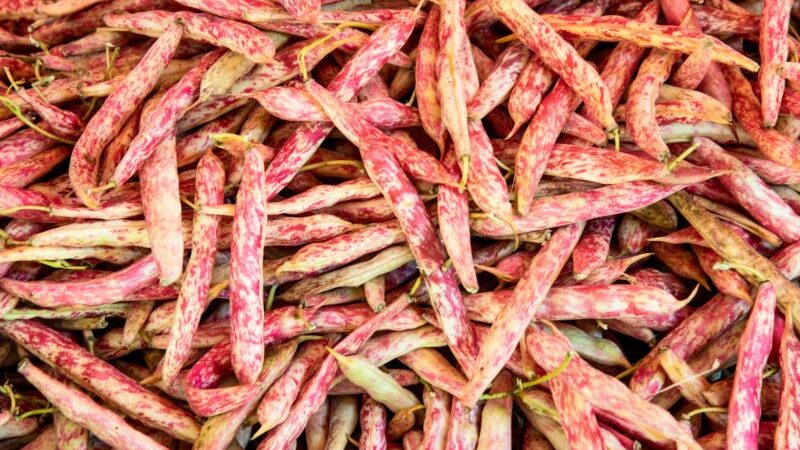Growing Cannellini Beans
Said to be native from Italy, Cannellini beans are a white type of kidney beans from the Phaseolus Vulgaris species. Despite this, growing cannellini beans is a faster and easier process as they can be harvested both as a fresh shell bean or as a dry bean.
In the next article, we will go through the complete process on growing and caring for cannellini beans, and how to get the best flavor out of this legume.

Optimal Way to Grow Cannellini Beans
When the temperature rises above 70° Fahrenheit in air and 60° on soil, plant the Cannellini beans in a spot with full sun 1-1.5 inches deep for both bush beans and pole beans. Space the bush beans 3-5 inches apart in rows 2 feet apart. Space pole beans 10 inches apart in rows 3-4 feet apart.
If you are planting pole beans in double rows then plant them 1 foot apart in rows and space them 10 inches from each other. Your cannellini beans should sow in 1-2 weeks after you plant them.
Gardening Tip: To avoid getting your seeds dug up by rabbits, rodents, or other animals, place a hardware cloth or chicken wire until your seeds sow
Growing Cannellini Beans in Seedling Trays
As with the other types of white beans, cannellini beans can also be sown in seedling trays. For this process, you want to plant 1-2 beans in each tray filled with some seed starting mix. Place them at least 1 inch deep and cover with soil again. When they grow their first set of true leaves, transplant them in your garden pots.
If they sprouted indoors and you plan on transplanting them outdoors in the garden, remember to let them go through their respective hardening process.
Take into account that beans are shallow rooted plants, so they prefer to be sown directly into their definitive place. If sown in trays and then moved, cannellini beans can suffer from transplant shock (and because of this they are not really popular plants to be started in seedling trays).
Despite this, sowing them in trays will help avoiding getting the seeds dug up by other animals, so if you decide to take this approach, try applying inoculant powder after transplanting the seedlings to help the roots stablish in the soil.
If this is your first time planting beans, and your area provides a large season to grow beans, I suggest to plant the cannellini beans directly into the soil and see how they do perform, then you can act accordingly in the forwards seasons.
Growing Cannellini beans in Containers

As Cannellini beans are shallow rooted plants, they are a very good option to plant in containers, as they won’t need too much space to grow. This is specially true for white kidney beans (cannellini beans) as they can be harvested both as fresh beans and as dry beans.
To sow cannellini beans in containers, put them 1 inch deep into the soil. You can use potting mix for the soil or just blend one for yourself by mixing 1/3 of compost, 1/3 of peat moss or coco coir and 1/3 of perlite or vermiculite. Just try to make sure your soil is in that Ph range of 6-7 that beans thrive for!
The pot should be about 12 inches in diameter and 10 inches deep. Here I’ll leave a link to amazon to acquire 5 gallon pots that work well to plant bush and vining beans.
It’s also important to have some draining holes ready in any pot that you use. As beans dislike having “wet feet” and this could lead to root rot.
Soil Requirements
Cannellini beans do better in clay or loamy soils that have a Ph between 6-7. But the most important part is to have them settle in a rich-nutrient soil by giving it a nice touch of compost.
For the best results, they should be located in a spot with full sun. If you are planting pole beans , make sure to give a good use to the shadow the beans will make in your garden and place crops that grow well in partial-sun. Of course, this depending on the type of support you plan to make for the beans.
You might have heard that beans are a popular companion plant as they fix the nitrogen in the soil. This is due to their roots, as the bacteria living in it takes the nitrogen from the air and provides it to the plant. So fertilizing beans is not really necessary to induce their growth.
If you want them to grow faster though, apply a mid-season touch of compost or a kelp extract solution.
Mulch
As with many plants, applying mulch to your cannellini beans is a recommended step to take.
Before applying mulch, make sure remove all the weeds from your garden bed, preferably by hand as the tools could go too deep into the soil and damage the shallow roots of the beans.
The mulch it’s great to maintain the weeds away and will help the soil conserve it’s moisture and temperature, which could save your beans during hot waves.
Trellising

When growing pole cannellini beans, it’s useful to make a trellis for the pole beans to grow.
There are many ways to trellis cannellini beans. A classic one is to plant some bamboo poles in a circle-shape and connect them at the top with a string in a teepee kind of form. If you are starting to plant cannellini beans for the first time this is a good, affordable idea.
Make sure to plant the bamboo poles at least 1 feet deep into the soil if you live in a windy area, if the depth is too superficial, the bamboo might drop due to the weight of the plants or a heavy wind. In the case you plant beans regularly, it might be a good idea to get an obelisk trellis.
Cannellini beans can also be attached to fences or arches, if you want to get an exotic bean garden there is a bean tower plant support. When it comes to trellis ideas, there are many options.
Common Pest and Diseases
In this link I’ll leave a list of the common pest and diseases beans tend to suffer from.
Harvesting Cannellini Beans
Cannellini Beans will be ready to harvest around 75-80 days after they’ve been planted. They can be harvested as fresh beans when the pods turn into a light yellow color, or they can be harvested as dry beans when the pods look shriveled and the seeds are tougher.
There are a couple ways to harvest cannellini beans. The pods can be picked up by hand when they are ready and then opened to release the seeds, or pods can be placed into a bag and throw it against the floor. Most of the seeds will get out of the pods which saves a lot of time.
Despite this, if you decide to use the bag method some parts of the pods will stay with the cannellini beans so you will need to winnow your beans to “clean them”.

And that’s it! If you are interested in seeing another guide on growing a popular bean consumed in Italy, check out this article on how to grow Borlotti Beans, which are often used as stewed beans in combination with many vegetables due to their sweetish flavor and creamy texture.
I hope this article was helpful for you. Wish you a great season!



